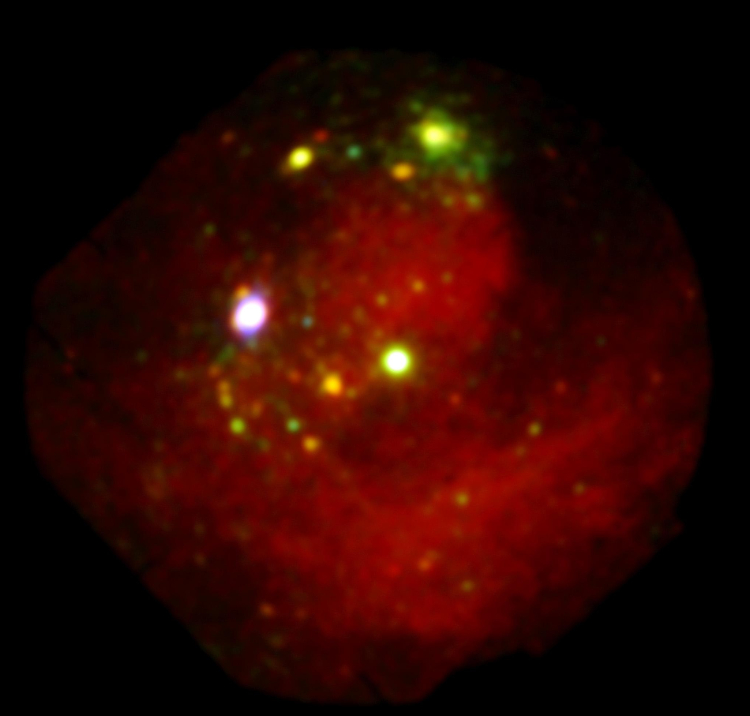
 Credit: Marco Iacobelli (XMM-Newton SOC) and ESA
Credit: Marco Iacobelli (XMM-Newton SOC) and ESA
Astronomers Discover Giant Glowing Octopus
Astronomers who view the Universe in high energy X-ray emission often see unusual things. Perhaps one of the most unusual is the image shown above, obtained by the XMM-Newton X-ray Observatory, which apparently shows a giant glowing octopus. This giant octopus is the largest ever captured, spanning over 300 light years in size, and was found lurking in the keel of a great, broken-up ship in the southern hemisphere. Even though many different types of phosphorescent sea creatures are known, this is believed to be the first such creature that glows in X-rays. We don't know if this X-ray glow serves any biological purpose. It probably arises from hot gas trapped within the body of the octopus itself, though the origin of this hot gas is not clear. We do know that the eyes of the octopus have great penetrating power, and their glow varies periodically, while a cluster of green lights sits atop the octopus's head like a hat. This astounding discovery has spurred the search for other examples of such celestial sea creatures, but astronomers are largely flummoxed as to what to call them, if found: octopi? octopuses? octopodes? Despite such daunting questions, astronomers are hopeful that one day in the near future they will, through detailed observation and careful analysis, gain a full understanding of these beautiful, hot creatures, and the role they play in the ecology of the celestial ocean in which they swim.
Published: April 1, 2019
<
HEA Dictionary ● Archive
● Search HEAPOW
● Other Languages
● HEAPOW on Facebook
● Download all Images
● Education ● HEAD
>
Each week the HEASARC
brings you new, exciting and beautiful images from X-ray and Gamma ray
astronomy. Check back each week and be sure to check out the HEAPOW archive!
Page Author: Dr. Michael F. Corcoran
Last modified Tuesday, 19-Oct-2021 15:44:47 EDT


